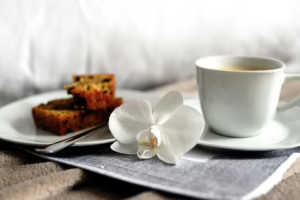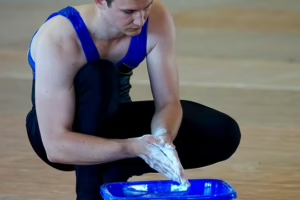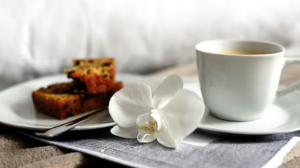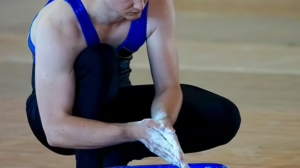From Bourbon to Vermouth: A Deep Dive into Essential Cabinet Spirits
Introduction
The world of spirits is a fascinating landscape filled with tradition, artistry, and innovation. From the rich, oaky notes of bourbon to the complex herbaceous flavors of vermouth, each bottle tells a story crafted by time, geography, and the hand of its creator. This article will guide you through the essential spirits that every home bar should have, emphasizing their unique characteristics, uses in cocktails, and how they can enhance your drinking experience.
Chapter 1: The Foundations of Spirits
Understanding Distillation
At its core, the art of creating spirits revolves around distillation—a process that extracts alcohol from fermentation. The various types of spirits derive their distinct characteristics from the raw materials used, the fermentation process, and the aging methods employed.
Types of Base Ingredients
- Grain Spirits: These include bourbon, rye, vodka, and gin. The choice of grain significantly influences the final taste.
- Fruit Spirits: Such as brandy and rum, these are distilled from fermented fruit or sugarcane.
- Vegetable Spirits: These are less common but include spirits like aquavit, made from grains or potatoes and flavored with herbs.
The Role of Aging
Aging is integral to many spirits, particularly whiskey and rum. The type of barrel, duration of aging, and environmental factors contribute to a spirit’s flavor profile. The interaction between the wood and the spirit can impart vanilla, caramel, and spice notes.
Chapter 2: Bourbon
The History of Bourbon
Bourbon is a distinctly American spirit, with roots tracing back to the late 18th century in Kentucky. The name “bourbon” likely derives from Bourbon County, named after the French royal family. To be labeled “bourbon,” the spirit must contain at least 51% corn and be aged in new charred oak barrels.
Flavor Profile
Bourbon is known for its sweet, full-bodied flavor with notes of caramel, vanilla, and oak. The higher the corn content, often leading to a smoother finish, the more pronounced these flavors will be.
Cocktails Featuring Bourbon
- Old Fashioned: A timeless classic made with bourbon, sugar, bitters, and a twist of citrus.
- Mint Julep: A refreshing blend of bourbon, muddled mint, sugar, and crushed ice, traditional in the South.
- Whiskey Sour: A balanced mix of bourbon, lemon juice, and simple syrup.
Chapter 3: Rye Whiskey
The Rise of Rye
Rye whiskey has a history as rich as bourbon, boasting a bit more spice due to its requirement of at least 51% rye grain. Once a staple of American spirits, rye saw a decline during Prohibition but has made a robust comeback in craft cocktail culture.
Flavor Profile
Rye tends to be spicier and drier than bourbon, offering notes of baking spices, pepper, and sometimes a hint of fruit.
Cocktails Featuring Rye
- Manhattan: A classic cocktail blending rye, sweet vermouth, and bitters.
- Sazerac: This New Orleans classic uses rye whiskey with absinthe, sugar, and bitters.
- Rye Mule: A refreshing twist on the classic Moscow Mule, using rye whiskey as the base.
Chapter 4: Gin
The Rebirth of Gin
Once considered a simple spirit, gin has experienced a renaissance driven by the craft cocktail movement. Traditional gin is characterized by the use of juniper berries and various botanicals, allowing for an incredible range of flavors.
Flavor Profile
Depending on the style, gin can vary immensely—from the piney, classic London Dry to more floral or herbaceous styles found in newer craft distilleries.
Cocktails Featuring Gin
- Martini: A sophisticated mix of gin and dry vermouth, garnished with an olive or a twist.
- Negroni: A bold blend of gin, Campari, and sweet vermouth.
- Tom Collins: A refreshing cocktail combining gin, lemon juice, sugar, and soda water.
Chapter 5: Vodka
The Most Neutral Spirit
Vodka is famous for being a clean, crisp spirit with little to no distinctive taste, making it a base for numerous cocktails. Its lack of flavor allows it to blend seamlessly into a variety of drinks.
Production Process
Made from a multitude of base ingredients—grains, potatoes, or even fruits—the quality of vodka can vary significantly based on the distillation process and filtering.
Cocktails Featuring Vodka
- Moscow Mule: A zesty mix of vodka, ginger beer, and lime, served in a copper mug.
- Bloody Mary: A robust cocktail combining vodka, tomato juice, and an array of spices.
- Cosmopolitan: A stylish cocktail made with vodka, triple sec, cranberry juice, and lime.
Chapter 6: Rum
The Caribbean Spirit
Rum is produced from sugarcane or molasses, resulting in a spirit that embodies the spirit of the Caribbean. It’s incredibly versatile, ranging from light to dark varieties.
Flavor Profile
Light rum is usually crisp and sweet, while dark rum has more complex flavors of caramel, vanilla, and spices. Aged rums develop depth and richness.
Cocktails Featuring Rum
- Mojito: A refreshing cocktail of rum, sugar, lime juice, mint, and soda water.
- Daiquiri: A simple, classic blend of rum, lime juice, and sugar.
- Pina Colada: A tropical mix of rum, coconut cream, and pineapple juice.
Chapter 7: Tequila and Mezcal
The Agave Spirits
Tequila, primarily made from the blue agave plant, holds a special place in the spirits market. Mezcal, its smoky cousin, can be produced from various types of agave, leading to a wider range of flavors.
Flavor Profile
Tequila can be sweet and herbaceous, while mezcal is often earthy with a distinct smoky character, making it a favored choice among cocktail enthusiasts.
Cocktails Featuring Tequila and Mezcal
- Margarita: A classic combination of tequila, lime juice, and triple sec.
- Paloma: A refreshing drink combining tequila, grapefruit soda, and lime.
- Mezcal Mule: A smoky twist on the Moscow Mule, featuring mezcal and ginger beer.
Chapter 8: Vermouth
The Fortified Wine
Vermouth is a fortified wine flavored with various botanicals, used primarily as an aperitif or mixer. Originally crafted in Italy and France, it plays a pivotal role in many cocktails.
Types of Vermouth
- Dry Vermouth: Typically white and used in cocktails like the Martini.
- Sweet Vermouth: Red and sweeter, perfect for drinks like the Manhattan and Negroni.
Cocktails Featuring Vermouth
- Martini: A mixture of gin or vodka with dry vermouth and a garnish.
- Manhattan: A fine blend of whiskey, sweet vermouth, and bitters.
- Negroni: Equal parts gin, Campari, and sweet vermouth.
Chapter 9: Liqueurs
The World of Liqueurs
Liqueurs are spirit-based drinks sweetened and flavored with fruits, nuts, herbs, and spices. Their versatility adds depth to cocktails and can even be enjoyed neat.
Popular Liqueurs
- Amaretto: An almond-flavored liqueur, great for sipping or mixing.
- Triple Sec: A sweet orange-flavored liqueur, often used in margaritas and cosmopolitans.
- Campari: A bitter aperitif used in classic cocktails like the Negroni.
Cocktails Featuring Liqueurs
- Amaretto Sour: A balanced blend of amaretto, lemon juice, and simple syrup.
- Aperol Spritz: An aperitif made with Aperol, prosecco, and soda water.
- Pisco Sour: A cocktail made with pisco, lemon juice, simple syrup, and egg white.
Chapter 10: Crafting the Perfect Home Bar
Essential Equipment
- Shaker: For mixing cocktails.
- Strainer: To separate liquid from solids.
- Jiggers: For measuring ingredients accurately.
- Muddler: For crushing herbs and fruits.
Glassware
Investing in a variety of glassware enhances the drinking experience. Essential types include:
- Rocks Glass: For cocktails served on the rocks.
- Highball Glass: For drinks with a mixer.
- Cocktail Glass: For serving martinis and other cocktails.
Creating Signature Cocktails
Experimentation is key in cocktail creation. Use the spirits in your collection to create unique combinations that reflect your personal taste.
Conclusion
The world of spirits is vast and varied, offering something for everyone. Understanding the foundational spirits—from bourbon to vermouth—can provide a deeper appreciation of cocktail culture and elevate your home bar experience. Each spirit offers its unique story and flavor profile, giving you the tools to craft exquisite cocktails and enjoy the art of mixology. Whether you aspire to be a professional bartender or simply wish to impress friends and family at your next gathering, a well-curated selection of essential spirits will ensure your cabinet is ready for any occasion.
References:
- [modern_footnote_source]
- Additional resources and references relevant to spirits and cocktails, academic articles, and interviews with distillers and mixologists may further bolster the reliability of the information presented.
This serves as a comprehensive guide to understanding essential cabinet spirits and the rich tapestry of flavors they offer.


























Add Comment